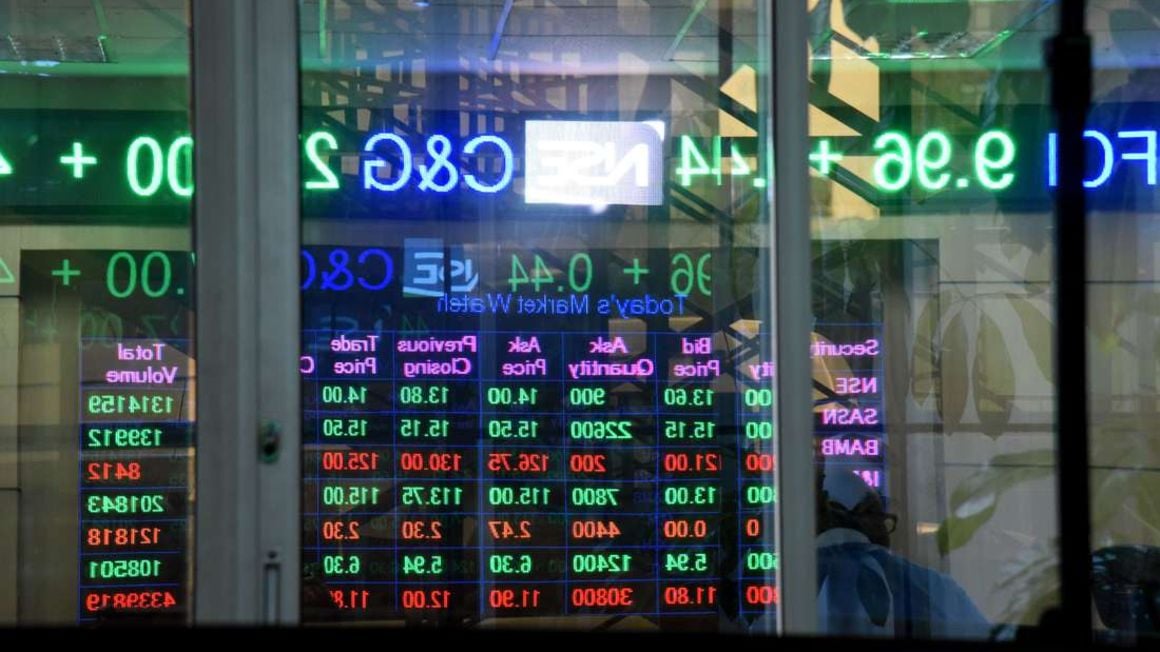
Nairobi Securities Exchange. FILE PHOTO | NMG
Summary
- At present, the NSE 20 dividend yield is 4.9 percent, compared with the 10-year treasury bond yield of 11.9 percent on October 19.
- That's a seven percentage points spread in favor of treasuries. In other words, for investors seeking investment growth, there are no alternatives.
- In summary, with all these headwinds, today's widespread uncertainty and investors mostly wondering what the immediate future may hold, the pain at the bourse may still continue.
If my favourite bollywood villain, Mogambo was an equity investor at the Nairobi Securities Exchange (NSE), he would’ve certainly remarked; Mogambo Khush Nahin Mogambo is not happy. Of course, this is the opposite of his now famous Bollywood catchphrase; Mogambo Khush hua Mogambo is happy.”
Quick help for the uninitiated; late Bollywood actor Amrish Puri’s character Mogambo in the movie Mr India, says the phrase when he is happy. But this is not the mood.
Plenty to be unhappy about; year to date show declines of 32.6 percent, 13.5 percent and 20 percent, for NSE 20, NASI and NSE 25 respectively, in 15 months ending September 2020.
Market cap losses had topped Sh100 billion and foreign investors, who make up about 70 percent of daily trading trading at the bourse, have been on the exit for full first half the year.
It is, therefore, not strange that many expect swings to continue rattling markets for weeks, if not months, as investors wait for more clarity on several key issues.
At the top of the list of uncertainties, for now at least, are the political drumbeats of the Building Bridges Initiative (BBI) and the ongoing Covid-19 crisis - markets are struggling to digest a swathe of mostly grim corporate earnings which only further highlight the damage done by the virus.
Concerns are likewise high about trade tensions between the world's biggest economies; United States and China, and whether the expectations building for a coming Covid-19 vaccine prove to be too optimistic.
Moreover, troubling economic numbers indicate an abundance of uncertainty at play today.
Unemployment rate doubled from 5.2 percent in Q1 2020 to 10 percent in Q2, 2020, the highest on record since 2018, according to the Kenya National Bureau of Statistics (KNBS).
Unemployment numbers were highest among young people aged between 20 and 29 (which is job entrant level), registering over 20 percent.
Records from the bureau also show that gross domestic product, a measurement of all the goods and services produced within the country, was 4.9 percent in the second quarter, down from 5.5 percent in the first quarter of this year.
All this data underscores the challenges in recovery of the stock market and the economy.
Not to mention, the yield model, which compares the dividend yield on the market with that of the yield available on Treasury bonds, does not benefit stock market investing.
The dividend yield is calculated by summing the outcome of NSE's listed companies' dividends for the previous year divided by their respective current market prices.
At present, the NSE 20 dividend yield is 4.9 percent, compared with the 10-year treasury bond yield of 11.9 percent on October 19. That's a seven percentage points spread in favor of treasuries. In other words, for investors seeking investment growth, there are no alternatives.
In summary, with all these headwinds, today's widespread uncertainty and investors mostly wondering what the immediate future may hold, the pain at the bourse may still continue. It may also be too soon to say whether the rut at the NSE will be over.
Mr Mwanyasi is the managing director of Canaan Capital





No comments :
Post a Comment